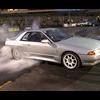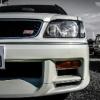Stresses on Engines?
Announcements
-
Similar Content
-
Latest Posts
-
Um. No. Since Matt introduced the TIM it has become a lot easier to deal with the consequences of changing K for AFM and injector swaps. Then, tuning is a f**king doddle. No-one needs to know or care how many grams of air are flowing or any other bullshit. Need more fuel in a cell? Add more fuel. Need more timing in a cell. Add more timing. Need to adjust any of the other tables for warm up and so on? No harder than anything else. Sure - it's not an ECU system for starting from scratch on an arbitrary engine. But then.....it was never supposed to be, not recommended for, and almost never used that way. So.... On your engine, in particular, Nistune/Nissan OEM is about as sophisticated and difficult as banging 2 rocks together. Those ECUs are primitive and simple. There is nothing difficult there. I learnt Nistune from scratch, created new maps with extended axes, interpolated/extrapolated the original maps onto them and tuned my RB20 (basically the same ECU as your 26 ECU) all by myself, more than 20 years ago. And that was long before even TIM.
-
Set of knee pads for a R34. Will fit every model I think. Comes with everything except the rubber covers for the bolt holes. Still in great condition. You will need to drill holes to mount these or use double sided tape. I can do free shipping and will be shipping from the Netherlands with tracking.
-
By joshuaho96 · Posted
Nistune needs something like an entire excel spreadsheet in which you build an abstraction layer that converts everything from real units you can actually measure into all of the various tables. The number of unexpected dependencies hiding in how the Nissan ECUs do math is a pretty impressive optimization trick for 8-bit MCUs but good god is it awful to actually work with in practice.




Recommended Posts
Create an account or sign in to comment
You need to be a member in order to leave a comment
Create an account
Sign up for a new account in our community. It's easy!
Register a new accountSign in
Already have an account? Sign in here.
Sign In Now